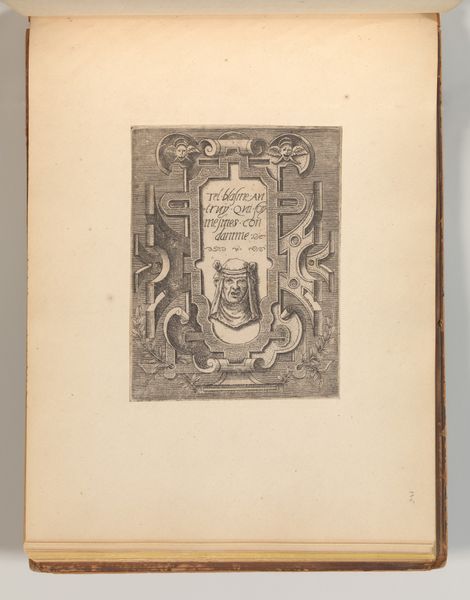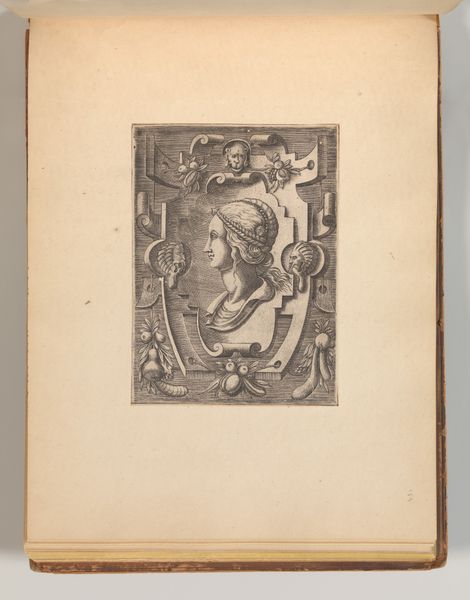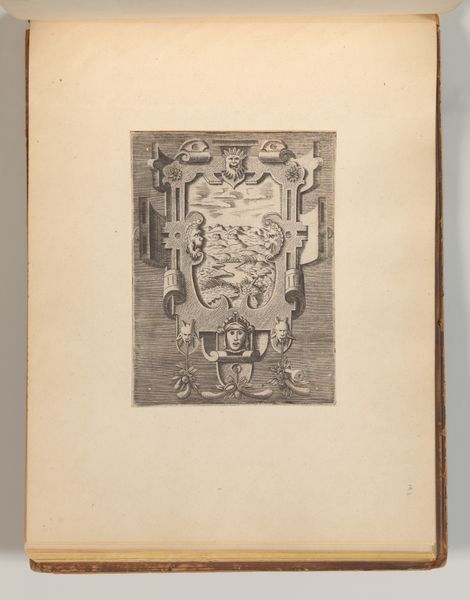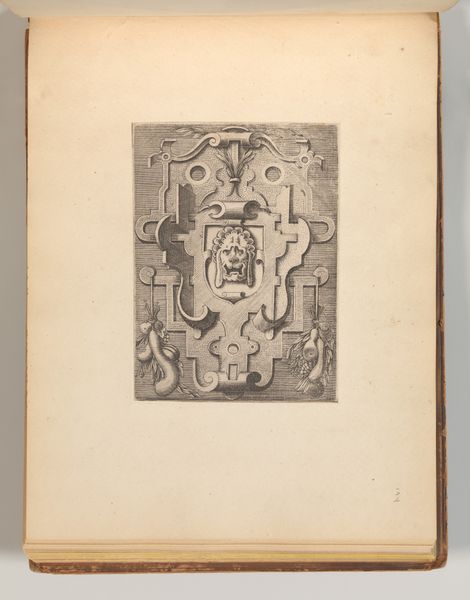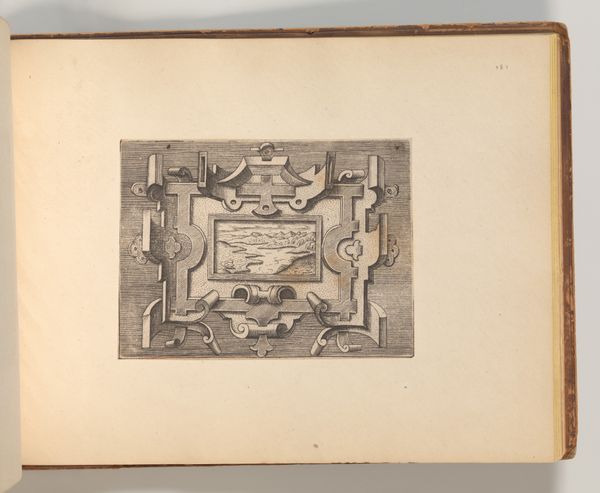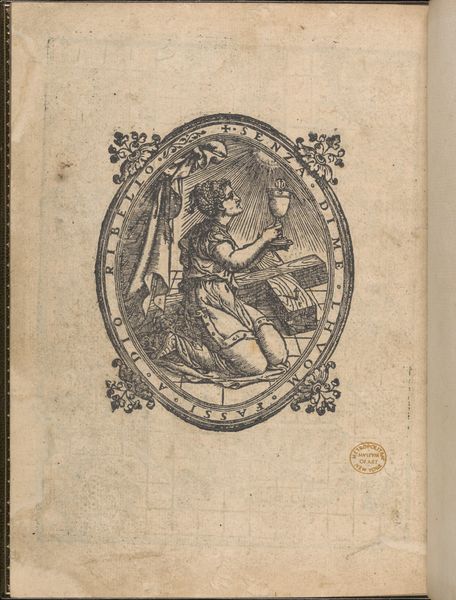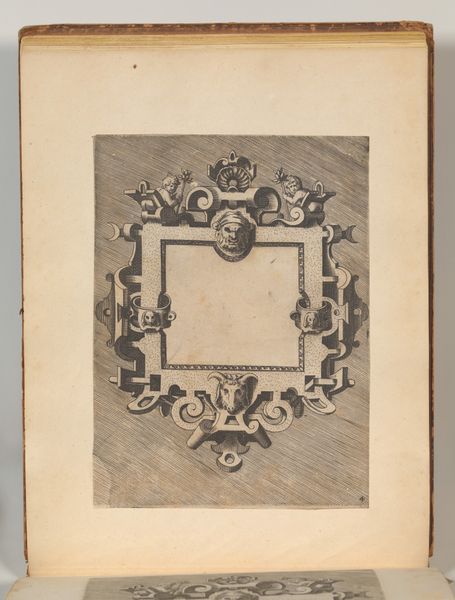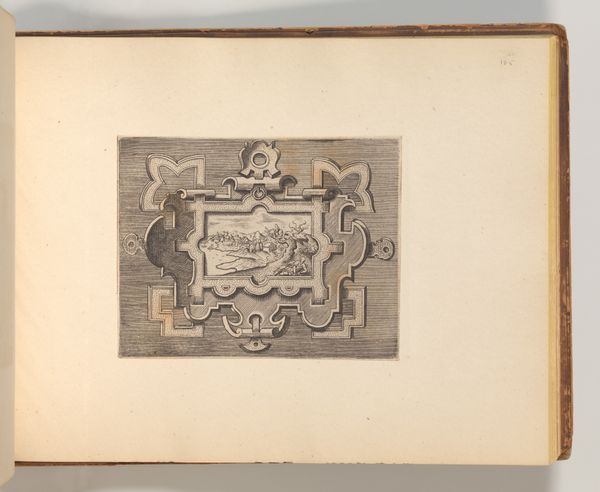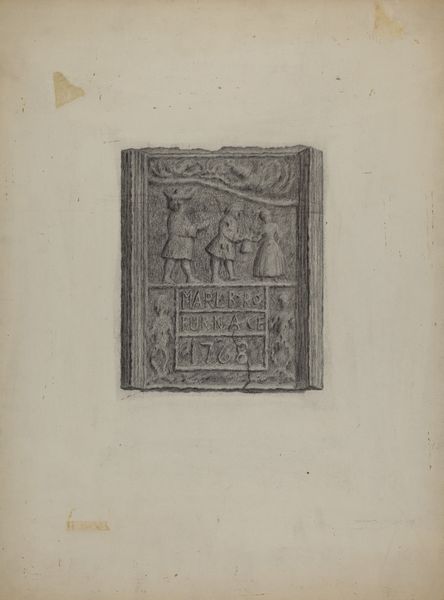
Series fof Cartouches, in: Targhe ed altri ornati di varie e capricciose invenzioni (Cartouches and other ornaments of various and capricious invention, page 34) 1540 - 1560
0:00
0:00
drawing, ornament, print, intaglio, paper, engraving
#
drawing
#
ornament
# print
#
intaglio
#
paper
#
11_renaissance
#
geometric
#
engraving
Dimensions: Sheet: 7 7/8 × 10 5/16 in. (20 × 26.2 cm) Plate: 5 1/8 × 11 13/16 in. (13 × 30 cm) Overall: 8 1/4 × 10 5/8 in. (21 × 27 cm)
Copyright: Public Domain
Curator: This intaglio print is from a series of cartouches created by Cornelis Bos between 1540 and 1560. It's titled, "Series of Cartouches, in: Targhe ed altri ornati di varie e capricciose invenzioni," or, "Cartouches and other ornaments of various and capricious invention." It's a page from a larger collection showcasing inventive designs. Editor: My first impression is its feeling of controlled chaos, or maybe ornamental agony. The geometric forms feel so constrained, yet the faces—especially that one at the bottom—express such wildness. Curator: That tension, I think, speaks volumes about the role of ornament at the time. These weren't merely decorative; they were statements of power, taste, and learning within very prescribed societal frameworks. Notice how the architectural elements—those stylized volutes and rectilinear shapes—are juxtaposed with those grotesque masks. It speaks to a moment of cultural shifts. Editor: Yes! The grotesque elements are doing so much work, emotionally. They interrupt the order of the piece. But those masks, traditionally associated with theatre and performance, could point to larger anxieties around social roles and appearances in the Renaissance era. Who performs what? Curator: Precisely! Bos's cartouches are interesting because they move beyond the purely aesthetic. They act almost as commentary on the era's fascination with classical ideals clashing with, as you point out, social anxieties and even a carnivalesque impulse. The inscription itself—which I am sorry to admit is currently untranslated—would shed further light. Editor: I wonder about the deliberate placement of those monstrous faces. High and low they seem almost to function like symbolic guardians to that core inscription. One screaming towards heaven or some form of release and the other glaring suspiciously back at us, the viewers. Are they keeping secrets, warning us of the danger in those untranslated words? Curator: A fascinating perspective! Thinking about these grotesque figures as guardians or gatekeepers opens up interpretations around access to knowledge and perhaps the anxieties surrounding new forms of media and the circulation of ideas during the Renaissance. The democratization of information had, and has, social cost. Editor: Seeing those anguished faces—it's made me rethink ornamental art entirely. Not just as decoration, but as coded expression and social commentary. Curator: Agreed. It reminds us to look beneath the surface embellishment and recognize that ornament can be a potent language in itself.
Comments
No comments
Be the first to comment and join the conversation on the ultimate creative platform.

